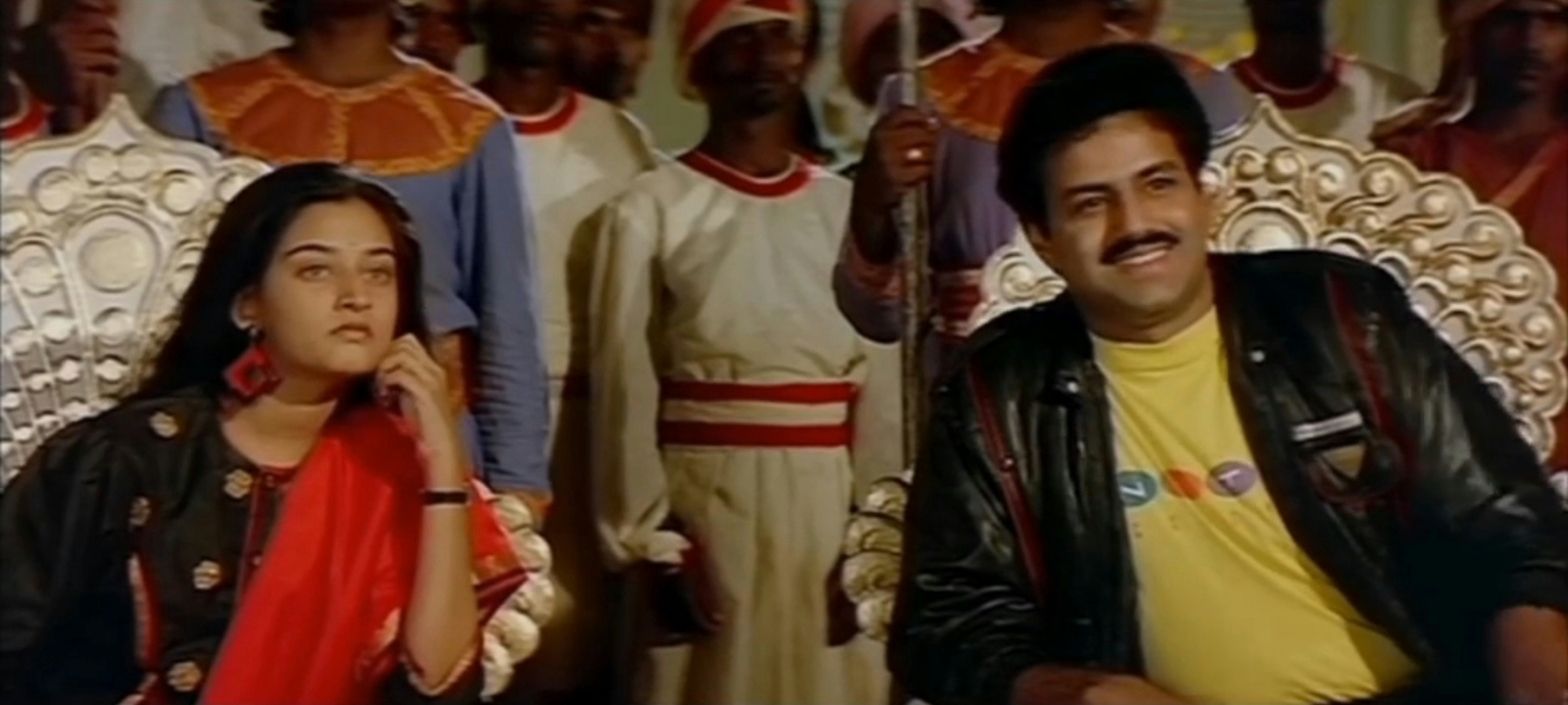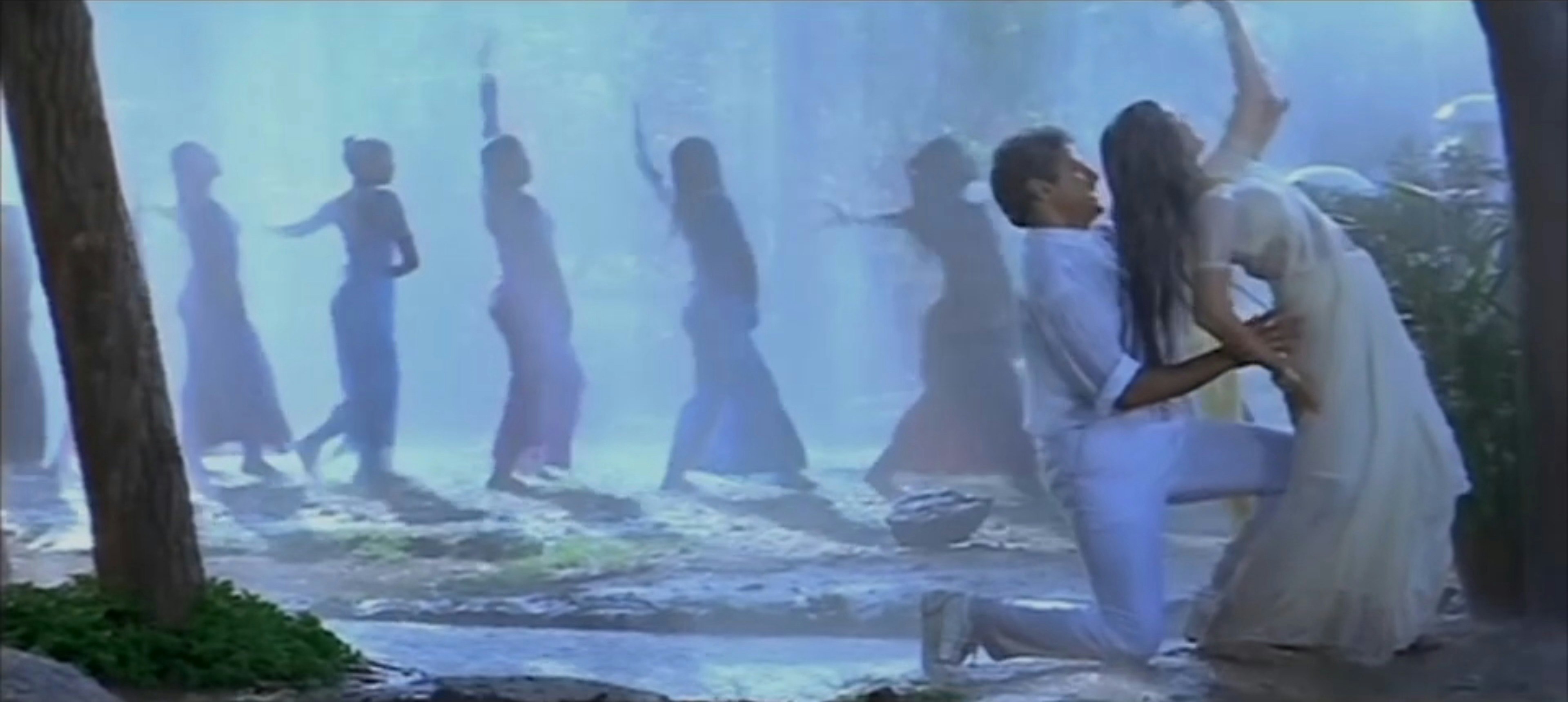
India’s first time-travel movie didn’t arrive until 1991, but when it finally did, it wasn’t afraid to imitate its influences. Or, in some cases, outright steal from them.
Borrowing equal inspiration from Back to the Future (1985) and Bill and Ted’s Excellent Adventure (1989), Aditya 369 looks back even further in its opening scene to reference two foundational science fiction franchises. The Telugu-language film, commonly considered a touchstone of South Asian science fiction, opens on an eccentric scientist busying himself in a lab with his latest experiments. Then, bizarrely, the camera cuts to still images of the original posters for Star Wars and concept art of Star Trek’s starship Enterprise.
It might seem odd from a Western perspective that writer-director Singeetam Srinivasa Rao’s homage to H.G. Wells’ The Time Machine so blatantly evokes Hollywood’s most formative genre blockbusters (especially with such amusing disregard for copyright laws), but that’s only the first of the film’s many rejections of typical storytelling rules. More than three decades after its wildly successful theatrical release on July 18, 1991, nothing about Aditya 369 can be called conventional.
True to form, the sci-fi adventure unfolds in unpredictable, almost counterintuitive fashion. For one thing, the film eschews the obvious choice of focusing on the time machine’s kindly old inventor, Professor Ramdas (played by Tinnu Anand, but dubbed by S. P. Balasubrahmanyam to spruce up the musical numbers). Instead, much of the story is driven by humble factory worker Krishna Kumar (Nandamuri Balakrishna) and Ramdas’ beautiful daughter Hema (Mahalakshmi Sreenivasan, dubbed by Sripathi Panditaradhyula Sailaja).
Then there’s the genre-jumping tone. Aditya 369 begins as a comedic crime caper with the villainous Raja Varma (Amrish Puri), a wealthy museum patron and serial thief, taking center stage as he schemes to steal a priceless cultural artifact with magical properties. This plotline eventually intersects with Krishna and Hema’s syrupy sweet romance when their attempts to thwart Varma accidentally send them back in time to the year 1526.

If you’re familiar with Tollywood cinema, you might expect Aditya 369 to veer into preachy finger-wagging. After all, our heroes just traveled back to the height of the Vijayanagara Empire, a golden age of truth, dharma, and kindness. So this would be the perfect opportunity to present a sanitized take on Indian history (a common practice that we saw more recently in S. S. Rajamouli’s RRR with its nationalistic retelling of the lives of two revolutionary leaders). But where Tollywood typically zigs, Aditya 369 zags.
Instead of celebrating the past, Singeetam unleashes a farcical celebration of modernity. Despite their alien appearances, Krishna and Hema earn an invite to court alongside several famous historical scholars. Unable to help himself, Krishna earnestly explains the benefits of free elections, recites a classic poem while the poet is still composing it, and casually reveals the existence of something called “movies” (specifically the 1956 Tamil-language Tenali Raman, for the curious) to the crowd of slack-jawed ancients.


If this sounds like a scene out of Back to the Future, you’re not totally wrong (though Singeetham hotly disputes the comparison). However, by satirizing such revered historical figures, India’s first-ever time-travel movie is making a much larger point: The crucial stepping stones on the way to progress are worth honoring, but that must never come at the expense of progress.
Krishna and Hema take this literally when they jump into the time machine once more and travel far away to the year 2504, which is when Aditya 369 seems to take a fatalistic turn.
In stark contrast to the decadence of the past (and the economic upswing of the film’s present), the characters are horrified to find themselves in a barren, radioactive, post-WWIII India. Rescued by survivors now thriving in a retro-futuristic civilization underground, Krishna and Hema suddenly become the ignorant primitives gawking at wonders beyond their comprehension — from machines that read thoughts out loud to devices that propel them into yet another dance sequence (intercut with flashes to, incredibly enough, Salacious B. Crumb of Star Wars fame).

Aditya 369 saves its most poignant development for last. Krishna stumbles upon information about his demise in the present, having apparently sacrificed himself to rescue a kidnapped Ramdas from a vengeful Raja Varma. Sent home to his own time, Krishna resolutely accepts his fate… though one final twist saves the day and ends things on an optimistic note.
It’s a surprising ending to a joyful science-fiction adventure, one that challenged the status quo of Indian cinema and remains ahead of its time even three decades later.







